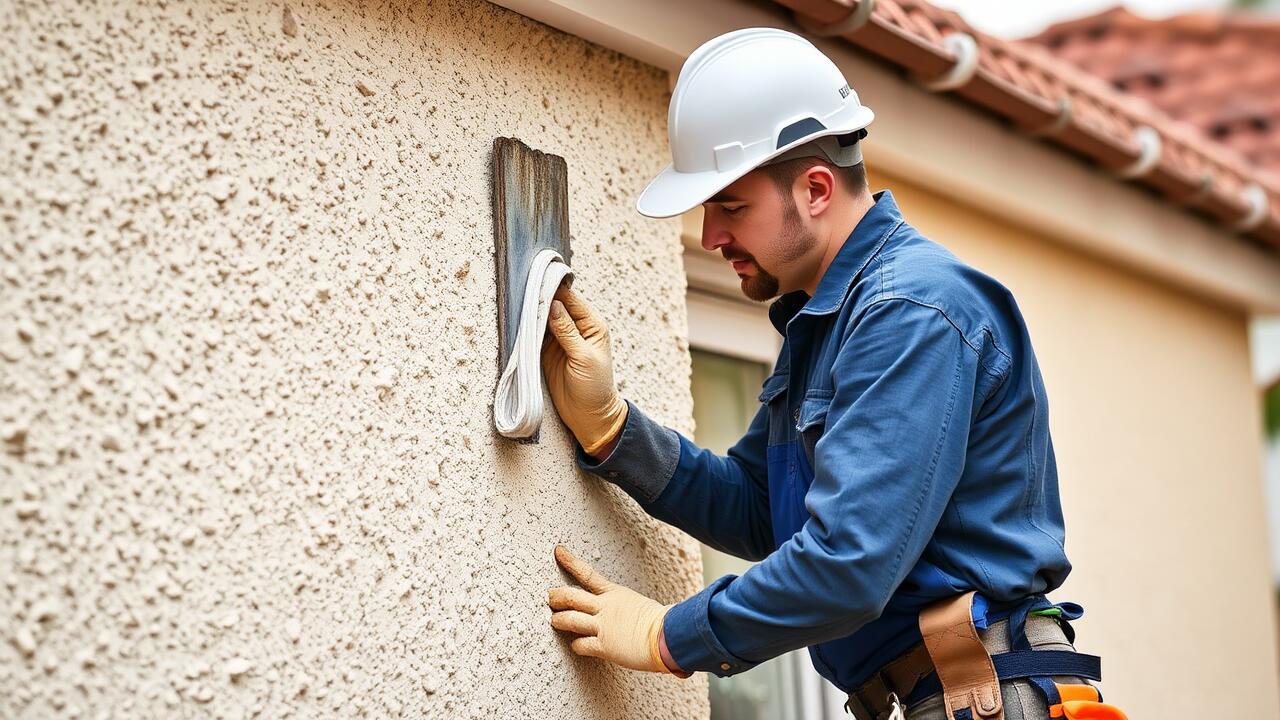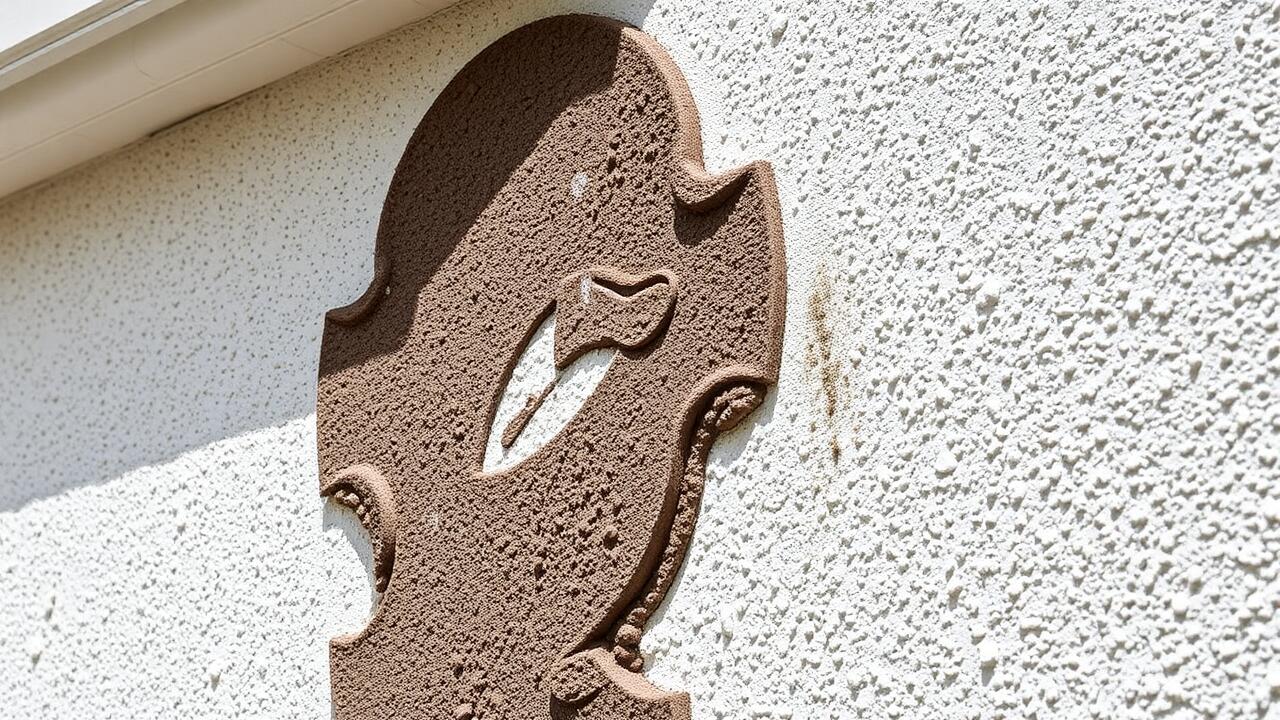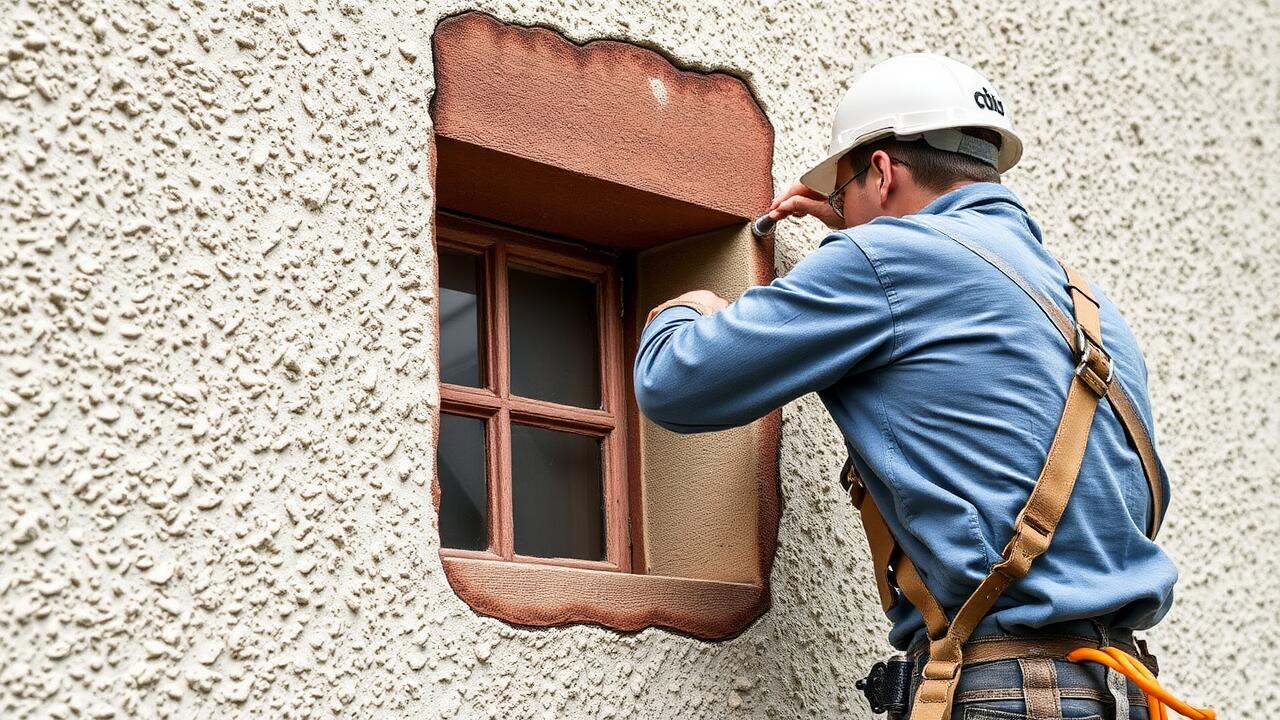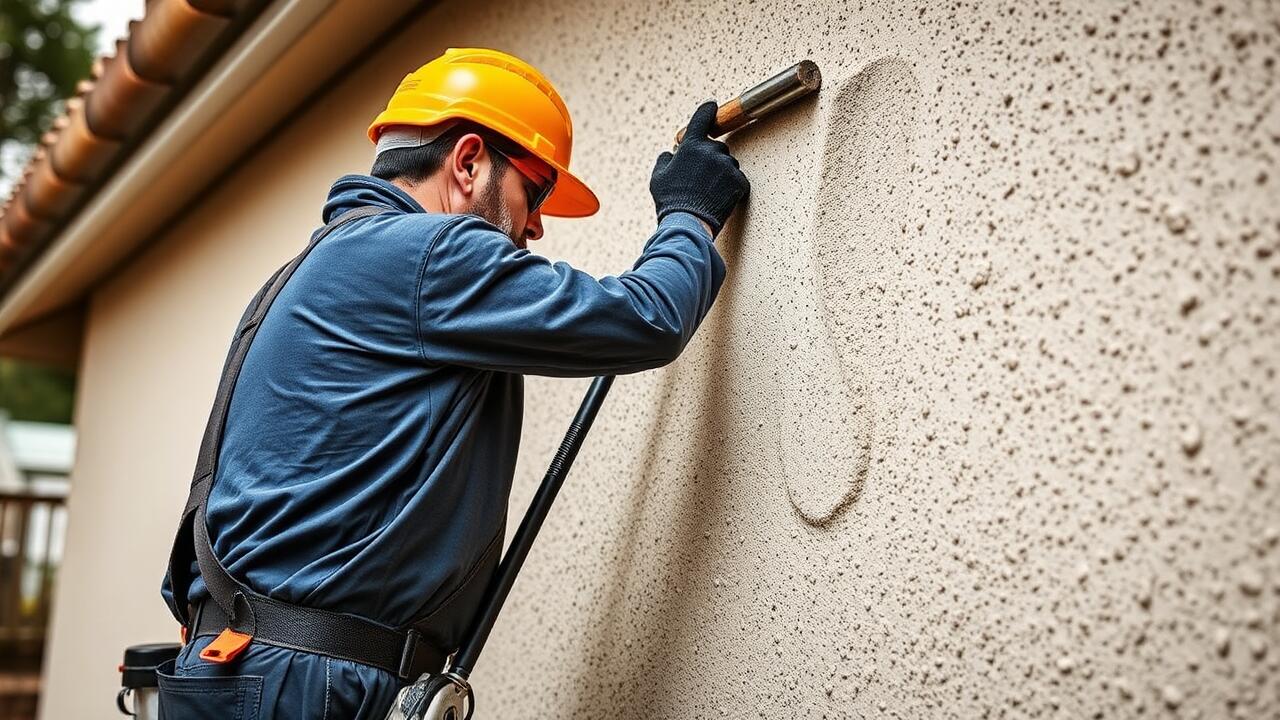
Fixing Larger Cracks and Holes
Dealing with larger cracks and holes in stucco requires careful assessment before starting any repair work. Begin by cleaning the area thoroughly to remove dust, debris, and loose material. A wire brush can be helpful for this process. If the crack is deeper than half an inch, use a chisel to expand the crack slightly, creating a V-shape that allows for better adhesion of the patching material. Once the area is prepared, it is advisable to dampen the stucco to prevent rapid moisture loss during the repair process.
For effective patching, a mix of stucco repair compound can be applied using a trowel. Make sure to press the compound firmly into the crack or hole, filling it to match the surrounding surface. It is essential to smooth the edges to ensure a seamless finish. After the patch has cured according to the manufacturer's instructions, you may consider reaching out for professional assistance in this area, such as experts in Stucco Repair in Silver Lake Heights, Los Angeles, who can help achieve a uniform texture and color blend with the existing stucco wall.
Methods for Patch Repair
To effectively repair small cracks and holes in stucco, start by cleaning the area with a wire brush or putty knife to remove any loose material and debris. This ensures that the patch adheres properly to the existing surface. A high-quality stucco patching compound can then be applied. Use a small trowel to press the compound into the crack or hole, smoothing it down to match the surrounding area. For larger repairs, consider using a backer rod to fill deep voids before applying the patching compound for better support.
When undertaking stucco repair in Silver Lake Heights, Los Angeles, timing is essential. After applying the patch, allow it to cure according to the manufacturer's recommendations. During this period, misting the area with water can help to prevent it from drying out too quickly, which could cause the patch to crack. After the patch has fully cured, sanding the area lightly will create a smooth surface for the next steps, such as applying a new layer of stucco or paint.
Applying New Stucco Layer
Applying a new layer of stucco requires careful preparation to ensure optimal adhesion and durability. Start by thoroughly cleaning the surface where the new stucco will be applied. Remove any loose debris, dust, or peeling paint. It’s also essential to dampen the old stucco slightly, as this can help the new layer bond more effectively. After preparation, mix the stucco according to the manufacturer’s instructions, achieving a smooth, workable consistency.
When applying the new stucco, utilize a trowel or a hawk to spread the mixture evenly over the surface. Aim for a thickness of around one-quarter to one-half inch. Work in small sections, smoothing out any imperfections as you go. To achieve the desired texture, consider using various tools or techniques, depending on the finish you want. If you need assistance or professional advice, consider seeking services for stucco repair in Reseda, Los Angeles.
Best Practices for Smooth Application
Achieving a smooth application when working with stucco is crucial for a professional finish. Begin by ensuring that the underlying surface is clean, free of debris, and properly prepared. A well-prepped surface allows the new stucco to bond effectively, which contributes to a durable finish. When mixing the stucco, follow the manufacturer's instructions closely to get the right consistency. This consistency plays a vital role in application ease and the overall texture of the surface.
When applying the stucco, use a trowel with a consistent motion to create an even layer. Work in manageable sections to maintain control while ensuring that each area merges seamlessly with the preceding and following sections. If you're considering a professional touch for your needs, look for services specializing in Stucco Repair in Silver Lake Heights, Los Angeles. They often have the experience and tools necessary to achieve a flawless appearance that enhances your property's curb appeal.
Painting and Finishing Stucco
When it comes to painting and finishing stucco, proper preparation is essential. Begin by cleaning the surface to remove any dirt, dust, or mold. This step ensures that the paint adheres effectively to the stucco. It's important to wait for the stucco to cure completely before applying paint, as moisture trapped within the surface can lead to peeling or bubbling. Once the surface is clean and dry, choose a high-quality paint designed specifically for stucco. This type of paint offers greater flexibility and breathability, helping to prevent moisture issues in the future.
Choosing the right color and finish can greatly enhance the aesthetic appeal of your home. Lighter colors typically reflect more sunlight, helping to keep the structure cooler, while darker shades can absorb heat. When selecting a paint, consider the surrounding environment and the overall style of your home. Proper application techniques are crucial as well, including using a roller for large areas and a brush for corners and edges. For a professional finish, some homeowners opt for stucco repair in Silver Lake Heights, Los Angeles, where experts ensure that both the repair and painting processes meet high standards.
Choosing the Right Paint for Stucco Surfaces
Choosing the right paint for stucco surfaces is essential for achieving a long-lasting finish. Because stucco is porous, it often requires a specific type of paint to ensure proper adhesion and prevent peeling. Look for paints labeled as suitable for masonry or specifically designed for stucco applications. These products typically feature a breathable formula that allows moisture to escape while providing a robust protective layer.
When preparing to paint your stucco, consider the local climate and the specific conditions of your area. Factors like humidity and sunlight exposure can greatly influence paint performance. For those in need of stucco repair in Silver Lake Heights, Los Angeles, selecting high-quality paint can enhance not only the aesthetic appeal but also the durability of the surface against the elements. Always test a small area first to ensure the color and finish align with your vision.
FAQS
What are the common signs of damaged stucco?
Common signs of damaged stucco include cracks, holes, water stains, peeling paint, and bulging or sagging sections of the stucco surface.
How can I fix small cracks in stucco?
For small cracks, you can use a stucco patching compound. Clean the area, apply the compound with a putty knife, and smooth it out to match the surrounding surface.
Is it necessary to apply a new layer of stucco after repairing?
It depends on the extent of the damage. If large areas are repaired or if the surface is uneven, applying a new layer of stucco can help achieve a uniform appearance.
What type of paint is best for stucco surfaces?
The best paint for stucco surfaces is a high-quality acrylic or elastomeric paint, as it allows for flexibility and helps prevent moisture damage.
How often should I inspect my stucco for damage?
It's a good idea to inspect your stucco at least once a year and after severe weather events to catch any potential issues early and prevent further damage.



